In our everyday life, we are surrounded by ceramics and glass. The house where we live and the place where we work may have been built, at least partially, with bricks, mortar, cement, and concrete. Refractory bricks line the fireplace. Ceramic tiles may decorate the floors of one or more rooms, as well as walls and kitchen countertops. Ceramic roof tiles are often used to insulate buildings, to create a water barrier and allow for proper water drainage. Glass windows and skylights provide natural illumination and protection from the outside elements. Low-emissivity coatings and smart glass are helping to create windows that are capable of controlling the amount of light coming in, while achieving energy savings. Glass fibers may be used to create an extra layer of insulation to keep the house cool in the summer and warm during the winter.
Ceramics and glass are beneficial in the kitchen for cooking, storing, and serving food. The finest tableware and cookware are made from porcelain. Wineglasses, pitchers, and jars are obtained from blown glass. Kitchenware based on Pyrex glass is ovenproof and used to cook premium baked goods. Ceramic coatings cover the oven’s internal surface and make it scratch-free, easy-to-clean, and well insulated to ensure uniform temperature. Even many washing machines and driers are coated with a porcelain enamel that is antiscratch, stain resistant and resistant to chemicals.
In the bathroom, most pieces of sanitary ware are manufactured using white clay-based ceramics, whereas the large vanity mirrors are created from flat glass panels.
Lighting fixtures comprise glass bulbs and, sometimes, shades, while unique shapes for lamp bases may be formed out of porcelain or earthenware. Our favorite pictures are protected with a glass layer and enclosed in a frame that may be carved out of a ceramic substrate. Objects of art decorating the house may be shaped from glass or ceramic.
Tables and furniture often have mirrors or see-through glass. French doors comprise small rectangular sheets of glass held together by a wooden frame. The entertainment area centers around a flat panel TV with a large glass panel. Inside the TV and other home electronics there are printed circuit boards containing a variety of passive components based on ceramic materials.
Outdoors, ceramic flower pots, statuettes, and bird baths may adorn the garden. Brick driveways may give the home a rustic appearance.
Out and about, car and trucks have window glass and many mechanical and electronic components produced from strong and durable ceramics. Bridges are built from concrete, as well as some roads and power line poles.
Some tennis courts may have a concrete surface. Tennis racquets engineered to mitigate tennis elbow may contain ceramic fibers. In-ground swimming pools are built out of concrete and may be lined with colored mosaic tiles to give the water a deeper blue appearance. Indoor pools are often placed under glass enclosures in order to benefit from maximum sunlight.
Other sports in which ceramics and glass are popular are golf, skiing, snowboarding, car racing, and biking. High-performance ceramics and ceramic- or glass-based composites are used in these sports to make lightweight and durable structures, such as ceramic putters, piezoelectric materials for smart skis, glass-carbon laminates for snowboards, and ceramic brakes for racing cars. Ceramic dots have been printed on fabrics to achieve ultra-strong, antibacterial jerseys for bikers. Also, bioceramic athletic recovery sleepwear has been introduced recently.
The main applications of ceramics and glass for everyday life applications are illustrated in the table below.
Main applications of ceramics and glass in everyday life
| Where? | What? | Examples |
|---|---|---|
| CERAMICS | ||
| Indoors | Refractory bricks | 1 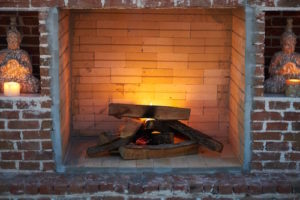 |
| Tiles | 2  |
|
| Kitchenware | 3 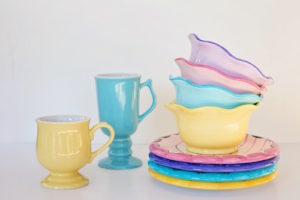 |
|
| Porcelain enamels for appliances (for example, stock pot) | 4  |
|
| Sanitary ware | 5  |
|
| Lighting fixtures | 6  |
|
| Decorative pottery | 7  |
|
| Outdoors | Roof tiles | 8  |
| Garden items | 9 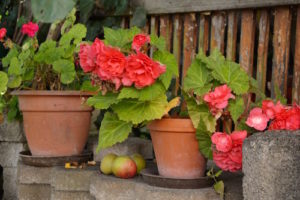 |
|
| Bridges and roads | 10  |
|
| Concrete tennis court | 11  |
|
| Sport items | 12 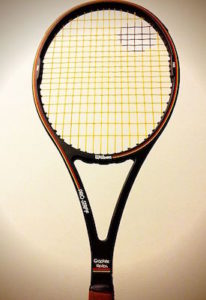 |
|
| GLASS | ||
| Construction | Windows and architectural glass | 13 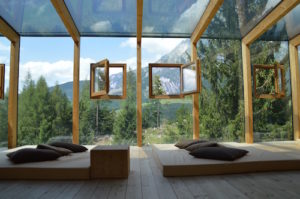 |
| Glass fibers for insulation | 14  |
|
| Pool enclosures | 15  |
|
| Indoors | Kitchenware | 16  |
| Bulbs and lighting fixtures | 17  |
|
| Furniture and mirrors | 18 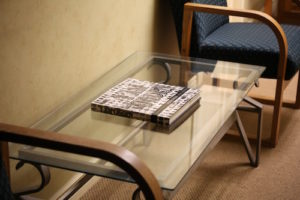 |
|
| French doors | 19  |
|
| TV glass | 20  |
|
| Outdoors | Automotive glass | 21  |
Image credits: 1. Pixabay; 2. Pixabay; 3. Pixabay; 4. QVCtv, YouTube; 5. THREESIXTY, Flickr; 6. Pixabay; 7. Pixabay; 8. Pixabay; 9. Pixabay; 10. Prayitno/Thank you for (12 millions +) view, Flickr; 11. Pixabay; 12. Grock9, Wikimedia; 13. Pixabay; 14. Radomil, Wikimedia; 15. Pixabay; 16. Scott Atwood, Flickr; 17. Pixabay; 18. Pixabay; 19. Lowe's Home Improvement, YouTube; 20. NerdVid, YouTube; 21. Pixabay
Join The American Ceramic Society
Become an ACerS member and enjoy the additional benefits of belonging to a global community of ceramic and glass scientists, researchers, materials scientists, professors, students, and manufacturers.

